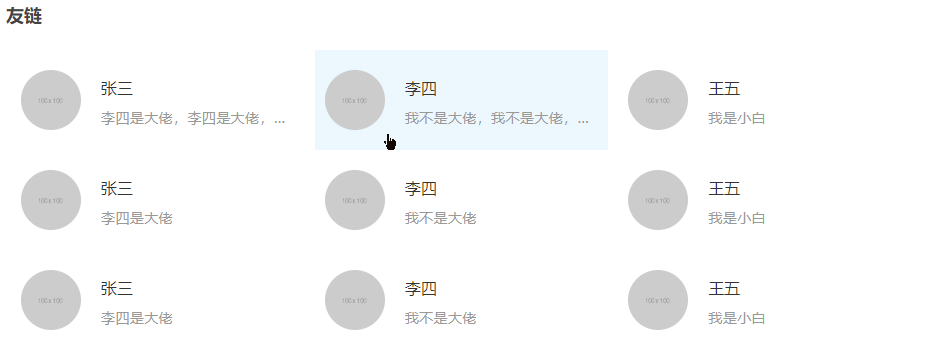# 辅助功能
## 快捷键
### 快速切换文章
::: tip
该功能在 `v1.1.0` 版本中快捷键为(`←`:切换到上一篇文章,`→`:切换到下一篇文章),在 `v1.1.3` 版本中快捷键修改为(Ctrl + `←`,Ctrl + `→`)。
:::
当你浏览文章时,如果不想通过鼠标点击按钮来切换文章,那么你可以使用快捷键(Ctrl + `←`,Ctrl + `→`)来快速切换文章。
如果你想启用这一功能,请修改主题配置文件:
``` yaml
shortcuts:
# 切换文章的快捷键
# "Ctrl + ←" 切换到上一篇文章
# "Ctrl + →" 切换到下一篇文章
switch_post:
# 是否启用
enable: false
```
> 考虑到这里的快捷键可能会和用户系统或软件的冲突,所以在 Stun 主题 `v1.1.3` 版本中,这个功能加入了配置项,用户可以自己决定是否开启,默认不启用。并且在 Stun 主题以后的版本中,可能会留出配置项让用户自定义快捷键。
### 快速关闭搜索框
关闭搜索框有三种方式,1. 点击关闭按钮,2. 点击蒙版,3. 按下 `Esc` 键。
## 标签插件
该功能相当于 Hexo 对 Markdown 语法的一种扩展,用于快速在文章中插入指定的内容。你可以访问[这里](https://hexo.io/zh-cn/docs/tag-plugins)查看 Hexo 都支持哪些标签插件。
Hexo 主题一般都会扩展一些自己特有的标签插件,在这方面做得最好的是 NexT 主题,你可以查看 NexT 主题所特有的标签插件:[https://theme-next.org/docs/tag-plugins/](https://theme-next.org/docs/tag-plugins/)。
此外,Stun 主题也有自己扩展的一些标签插件,这些标签插件如下:
### 插入表格数据
如果想要在文章中显示一个表格,你可以使用 Markdown 原生支持的语法,但是如果你想要让表格里的数据存储在外部文件中,那么你可以使用下面这种语法:
```
{% table [path] [thead1,thead2,...] %}
```
参数:
`[path]`:数据文件的路径
`[thead1,thead2,...]`:表格头部的文字(用半角逗号分隔,逗号前后不要有空格)
::: warning
数据文件必须放在 `/source/` 目录下,建议放在 `/source/_data/` 目录下。
:::
举例:
在文章或页面中显示一个打赏列表。
1. 在 `/source/_data/` 目录下新建文件 `reward.json`,填入数据。
``` json
[
{
"time": "2019-6-1",
"sponsor": "张三",
"money": "9.9",
"remark": "支持一下~"
},
{
"time": "2019-6-16",
"sponsor": "李四",
"money": "11",
"remark": "前来支持,继续加油!"
}
]
```
2. 在文章或页面的 Markdown 源文件中,插入如下标签。
```
{% table _data/reward.json 时间,赞助人,金额,留言 %}
```
3. 重启 Hexo 服务器,效果如下。

### Bootstrap 标注
语法如下:
```
{% note [type] [no-icon] %}
**header text**
any text
{% endnote %}
```
> 标签内可以是任意文字,支持 Markdown 和 HTML 语法。
参数:
`[type]`:标注类型
`[no-icon]`:是否显示 ICON
举例:
``` markdown
{% note success %}
**Success**
This is success note.
{% endnote %}
{% note success no-icon %}
**Success**
This is success note.
{% endnote %}
{% note success %}
This is success note.
{% endnote %}
{% note success no-icon %}
This is success note.
{% endnote %}
```
全部效果如下:


### 友链
语法如下:
```
{% friends [path] %}
```
参数:
`[path]`:数据文件的路径
::: warning
数据文件必须放在 `/source/` 目录下,建议放在 `/source/_data/` 目录下。
:::
举例:
1. 在 `/source/_data/` 目录下新建文件 `friends.json`,填入数据。
``` json
[
{
"avatar": "https://placehold.it/100x100.jpg",
"name": "张三",
"introduction": "李四是大佬,李四是大佬,李四是大佬,李四是大佬,李四是大佬",
"url": "https://liuyib.github.io/"
},
{
"avatar": "https://placehold.it/100x100.jpg",
"name": "李四",
"introduction": "我不是大佬,我不是大佬,我不是大佬,我不是大佬,我不是大佬",
"url": "https://liuyib.github.io/"
},
{
"avatar": "https://placehold.it/100x100.jpg",
"name": "王五",
"introduction": "我是小白",
"url": "https://liuyib.github.io/"
},
...
]
```
::: warning
数据的格式要和上面保持一致,即要有:`avatar`、`name`、`introduction`、`url` 几个字段。
:::
2. 在文章或页面的 Markdown 源文件中,插入如下标签。
```
{% friends _data/friends.json %}
```
3. 重启 Hexo 服务器,效果如下。
